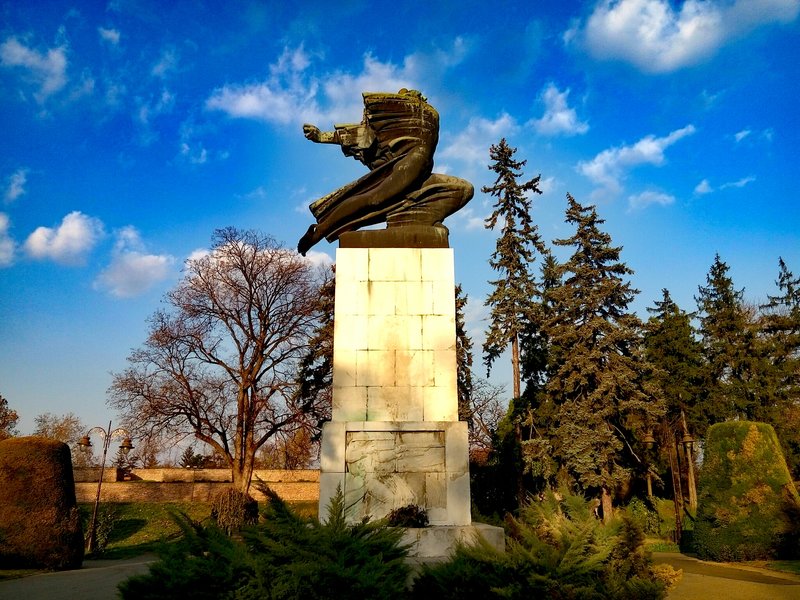On 11 November 1930, the 12th anniversary day of the end of the First World War, a memorial of gratitude to France in Belgrade’s Veliki Kalemegdan Park was formally unveiled in the presence of King Alexander and Queen Maria, the royal government, the delegation of the French government, Serbian war veterans, distinguished citizens, associations, schools, and a large crowd of people.
In the decisive days of the war after the epic battles of the Serbian Army, its perilous withdrawal across Albania and the almost inconceivable feat of breaching the enemy lines on the Salonika (Macedonian) Front, a military alliance and friendship between two countries had been forged. After the war, Serbian intellectuals gathered around the Association of French Schools Alumni and the Society of Friends of France initiated erection, in Belgrade or Paris, of a monument to France, as a token of gratitude for her military and educational aid during and after the war, and of the friendship built in the days of greatest trials. In 1924 the Committee for Erecting a Monument chaired by Niko Miljani? (1892–1957), a physician, one of the founders of the Belgrade University School of Medicine, was set up. The Committee succeeded in raising considerable funds within a short span of time. Of relevance to the history of the monument is also the year 1921, when Belgrade City Council made the decision to erect a gratitude and honor memorial to the French soldiers who had lost their lives defending Belgrade in 1915.
After the war, the Kingdom of Serbia ceased existing as such, becoming part of a newly created complex state, the Kingdom of Serbs, Croats and Slovenes, subsequently Yugoslavia, and Belgrade, as its capital, saw a period of reconstruction and embellishment. In 1928, the City Council of Belgrade allocated a parcel of land in Kalemegdan, formerly possessed by the Army, for the monument: “in the most beautiful part of Kalemegdan Park, which commands one of the most beautiful European landscapes, and in the vicinity of which the home of France will be rising soon” (the French embassy built in 1928–32). France responded to this gesture by setting up monuments to King Peter I the Liberator and King Alexander I the Unifier in Paris, memorials in Orleans and Marseilles, and by naming one of central Paris avenues after King Peter I of Serbia.
The design of the monument was entrusted to the world renowned Croatian sculptor Ivan Mestrovic , who made a model in his Zagreb studio . The sculpture was cast in fourteen pieces at the Art Foundry of the Academy of Fine Arts using the lost wax technique. The pieces were joined to form two halves of the vertically divided sculpture, transported to Belgrade and assembled together on the site. The monumental figure, over four meters tall, represents France rushing to Serbia’s aid. The expressive movement of the allegorical female figure, an important motif in Mestrovic’s sculptural work, evokes and glorifies the national spirit of France, suggesting energy, leadership, courage and faith.
Engraved on its front are the year of erection and the dedication “A la France”, and on the back, the inscription “We love France as she loved us 1914–1918”.


